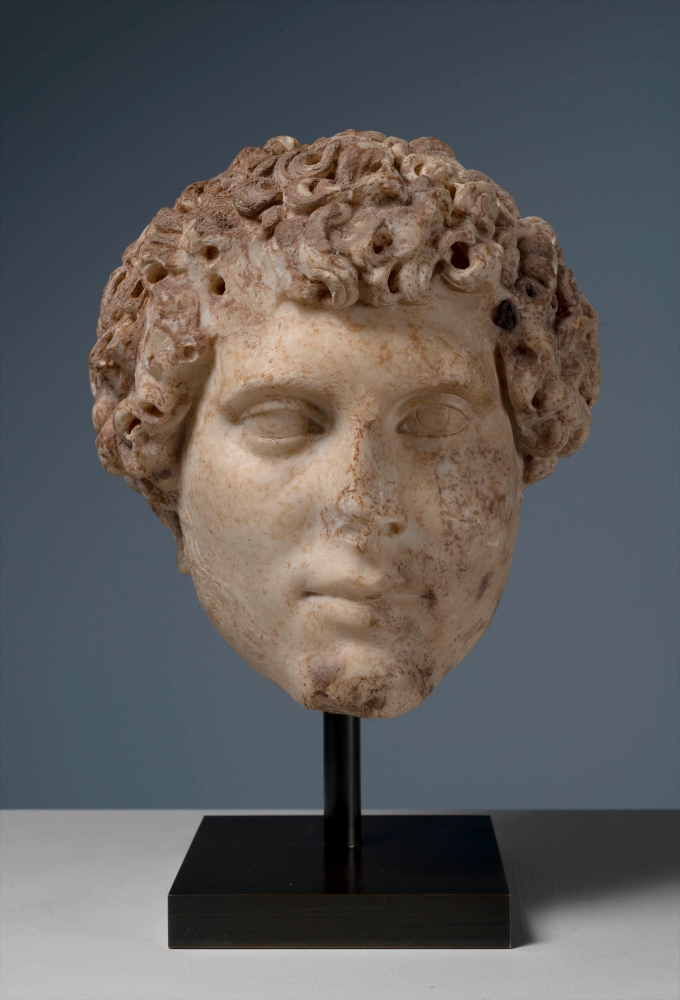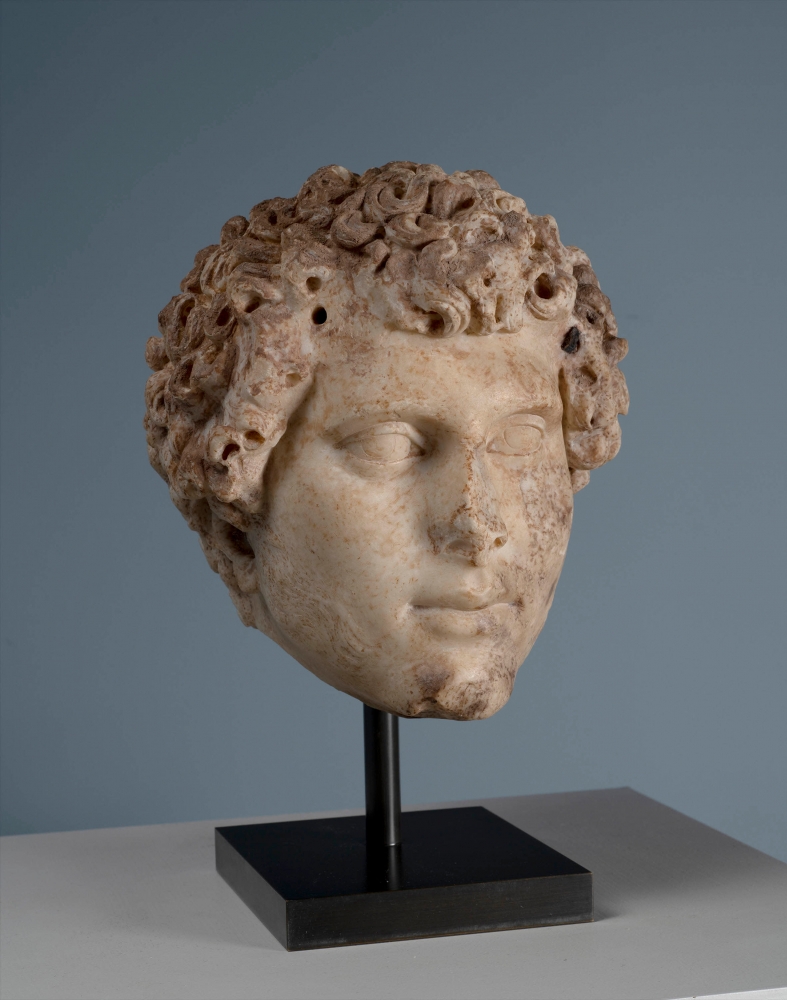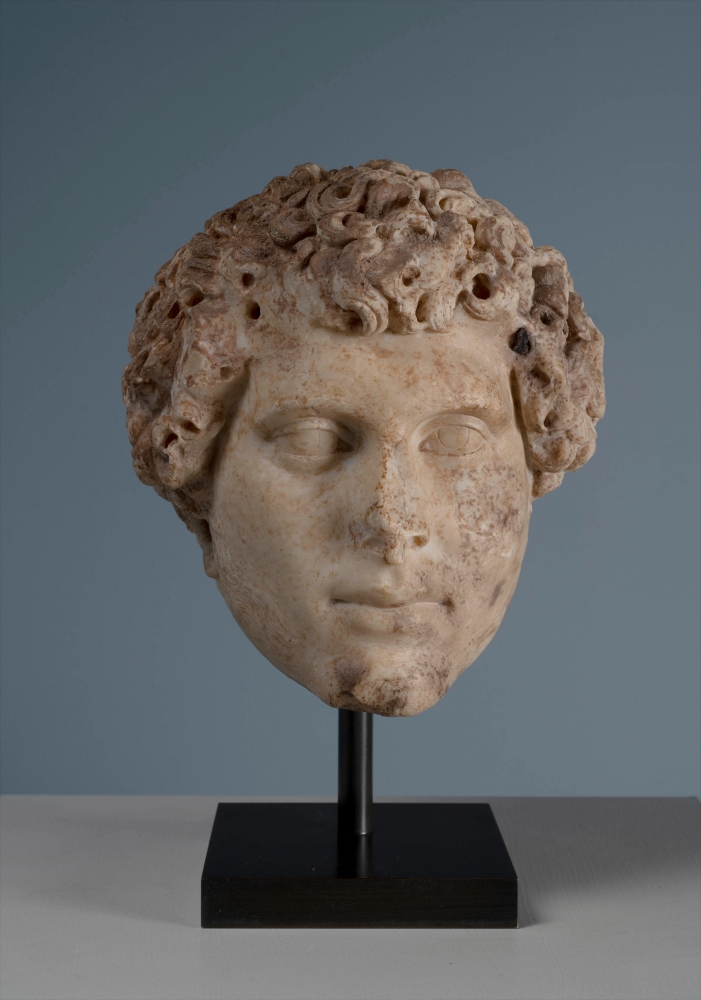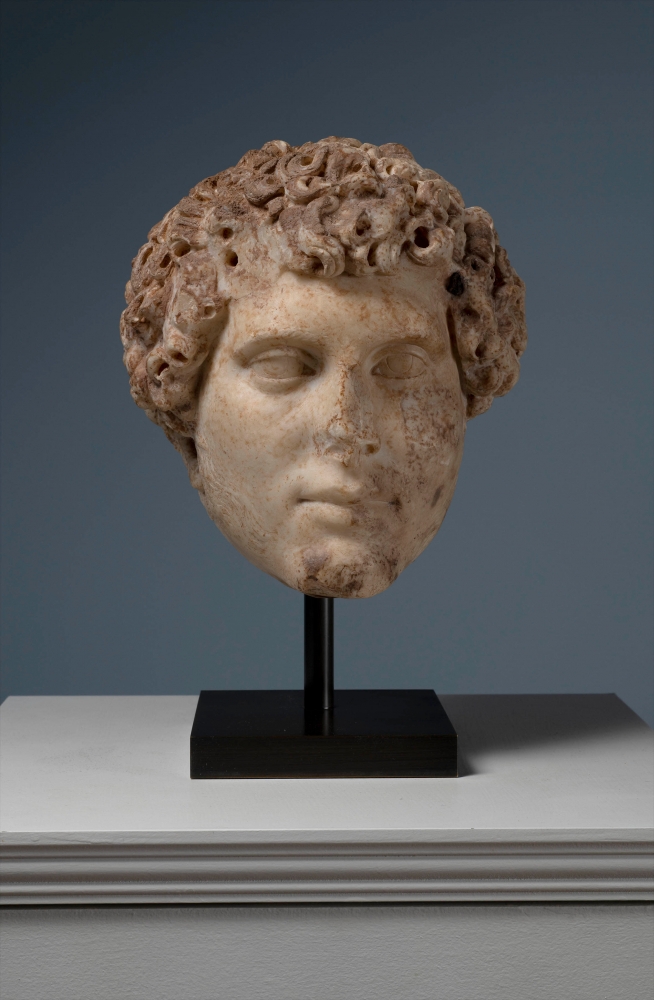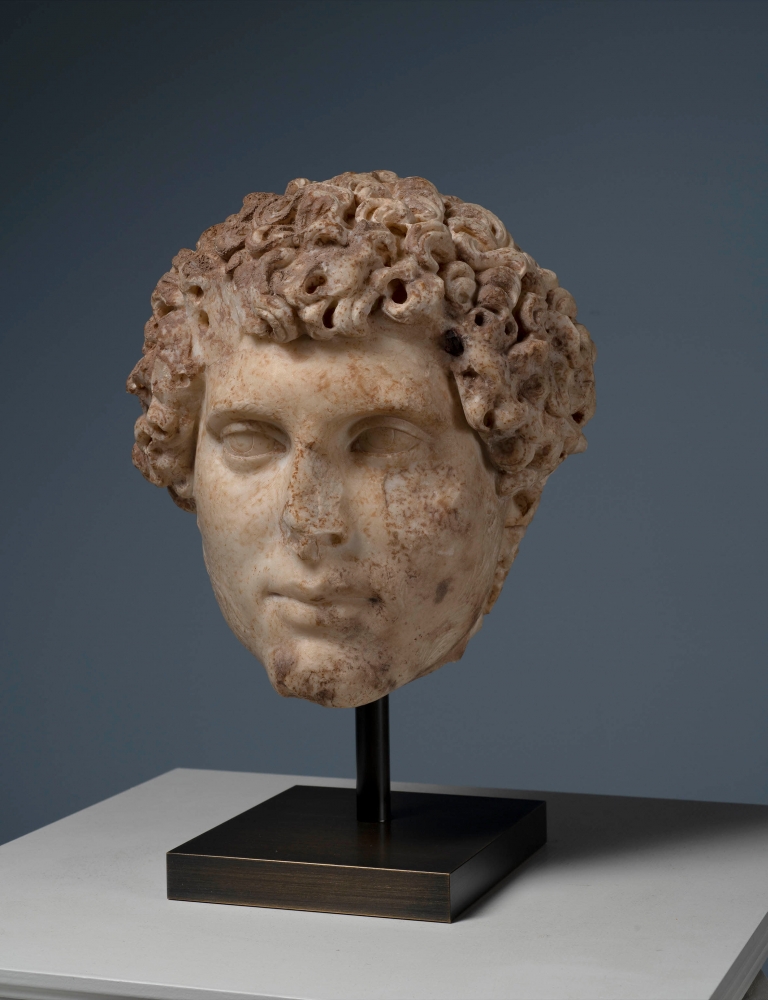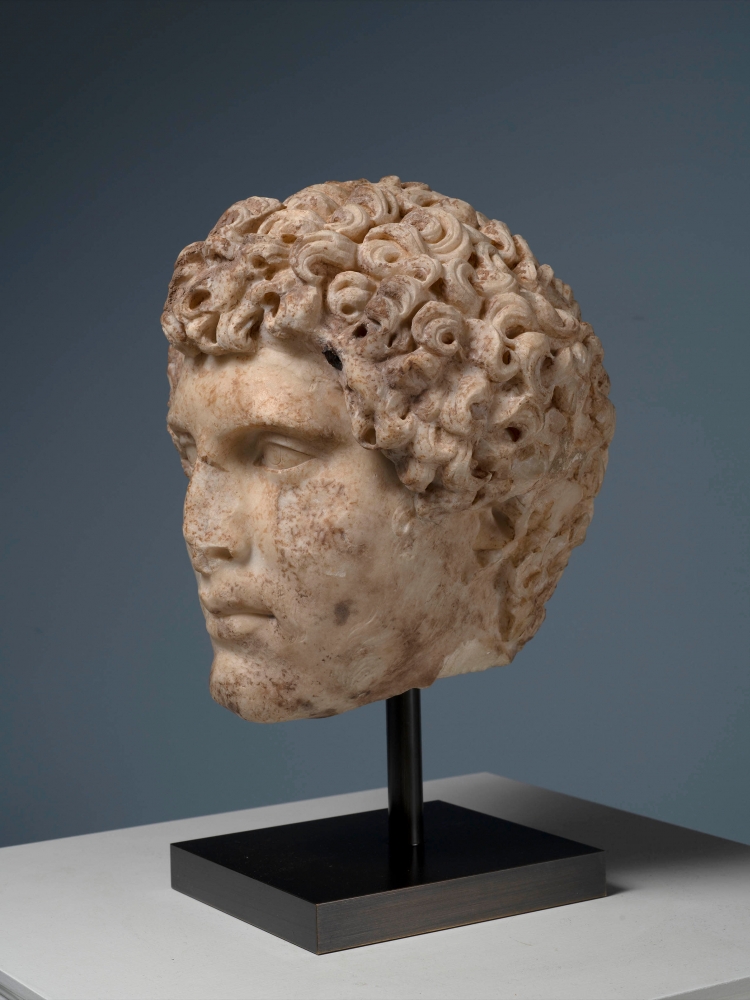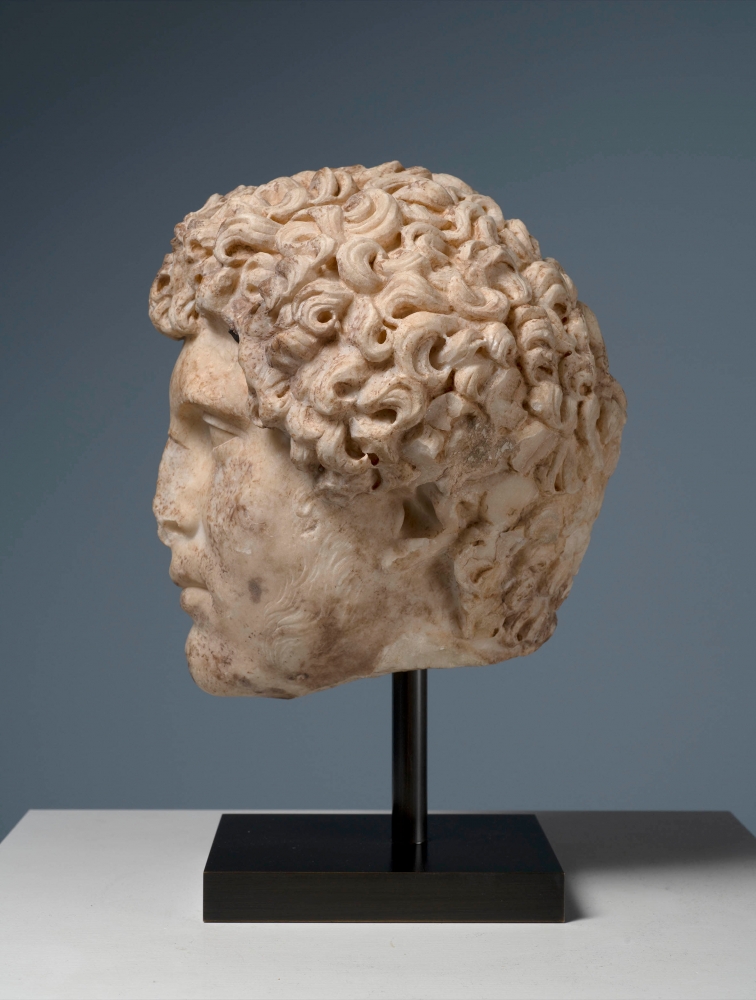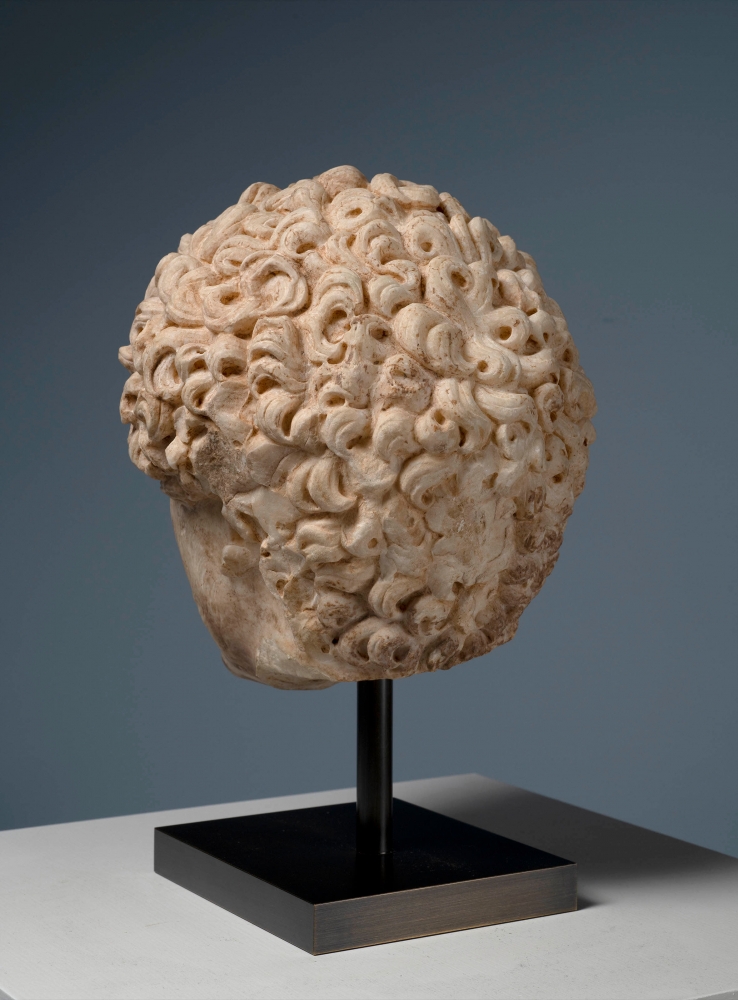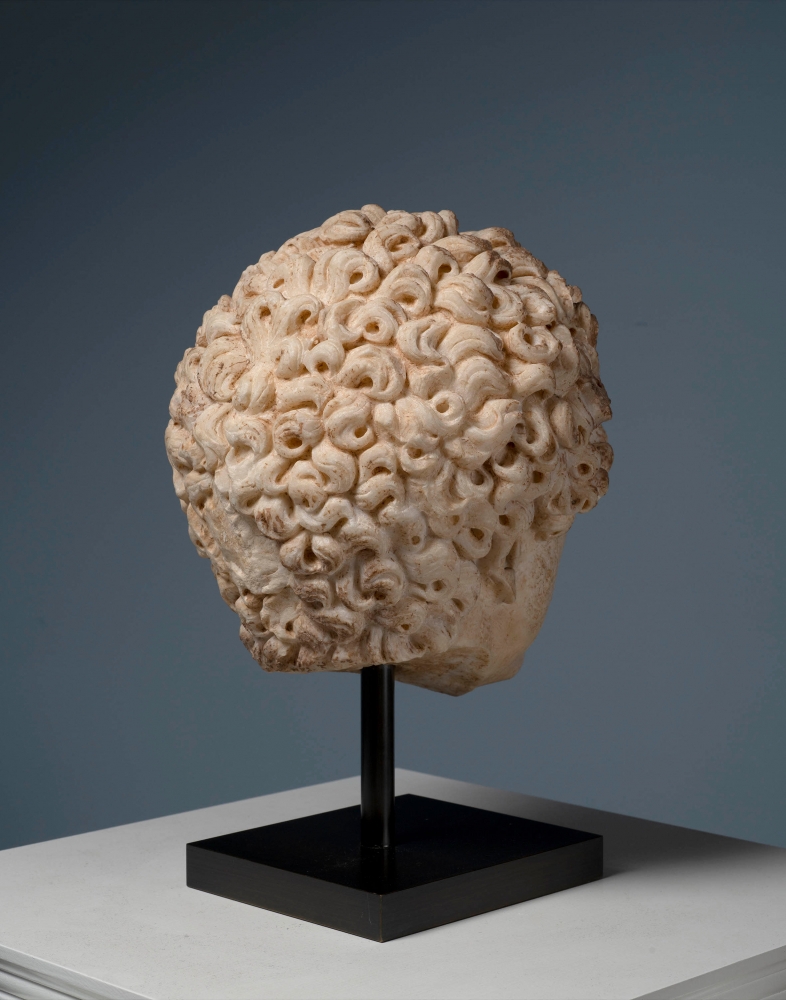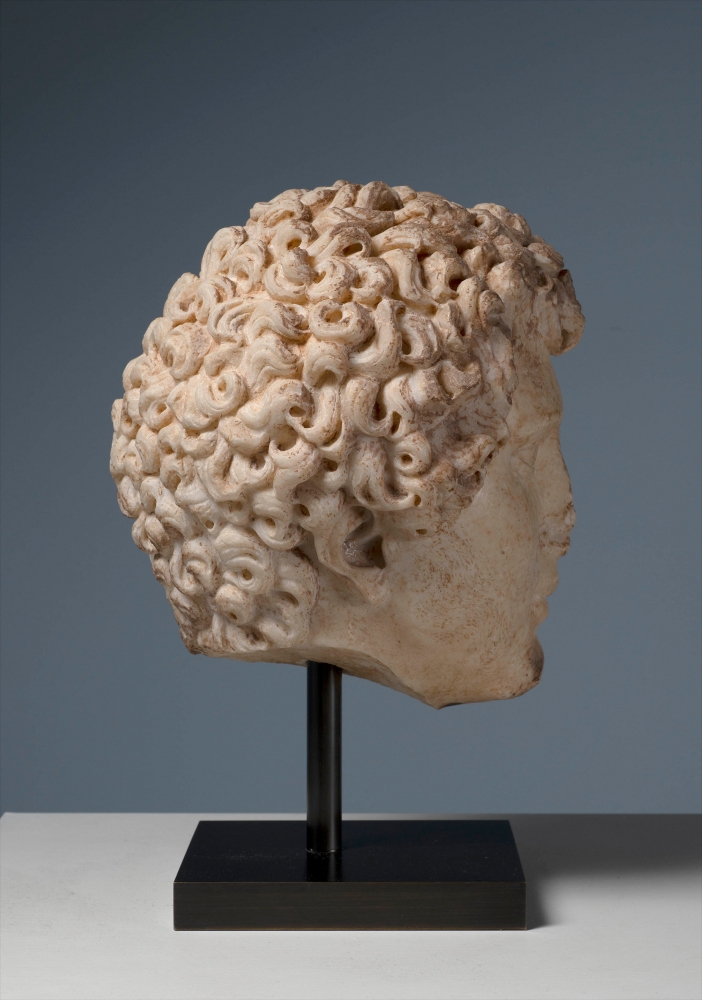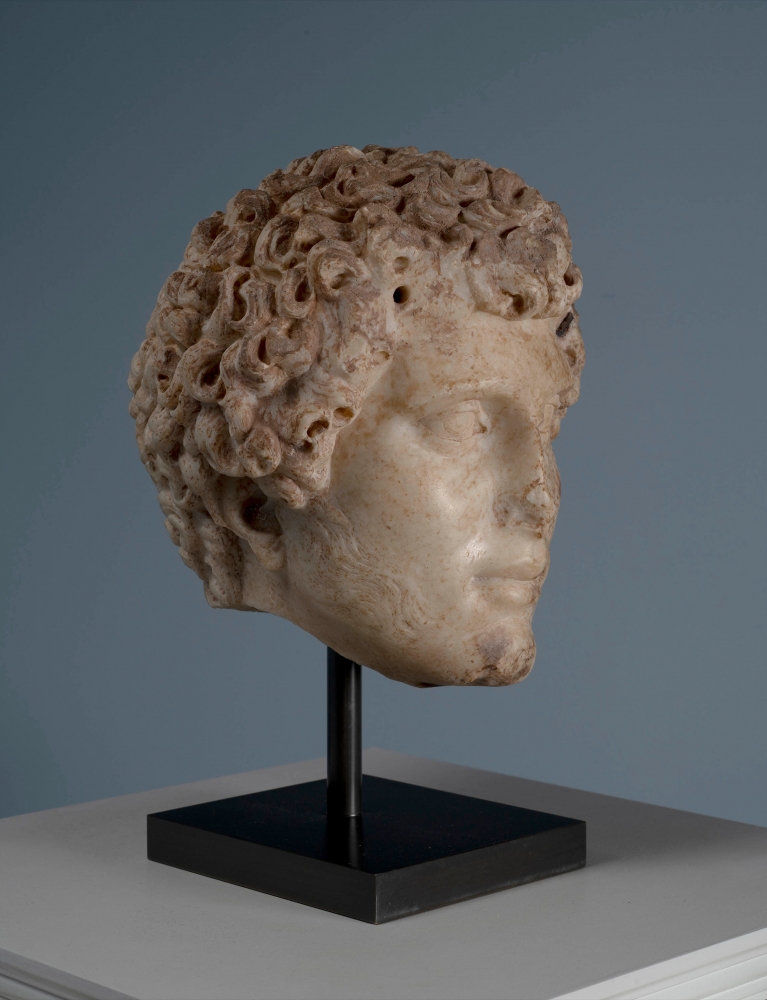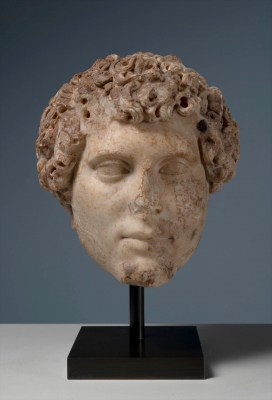Collection of Reto Mueller (Zurich, Switzerland), 1950s-61;
Galerie Fasciani-Escher (Locarno, Switzerland), 1961-1962;
Collection of Marino Croci (1909-2001, Lugano, Switzerland), 1962-2001;
Collection of Tiziano D’Orazio (Lugano, Switzerland), 2001-2022;
Private Collection (Switzerland), 2022.
Click here to download the factsheet
We are confronted with the visage of a young man, in his late teens or early twenties. His thick, curly hair sits low on his forehead and extends beyond the sides of his face, partially covering both ears. The nose gracefully parts at the bridge into a heavy browbone, accentuated by a sensitively rendered pair of eyebrows. His eyes are deep-set, with thick lids and a pair of carved irises, which are turned slightly to the proper right. The nose is partially lost, as are the lobes of both ears. There is slight chipping at the chin, and the hairstyle has lost some of its original detailing, especially over the right side of the forehead. However, the head is remarkably well-preserved: the delicately carved beard and moustache remain, and the curls at the crown of the head are in particularly superb condition. The are no restorations. The marble has not been overcleaned and exhibits a warm brownish coloration resulting from burial.
In Imperial Rome, individual portraits for both men and women took stylistic cues from the official portraits of the reigning Emperor, which were produced and distributed throughout the Empire. The present head can be dated to the middle of the second century A.D. by comparison to other similar portraits. The features of this head would have been unimaginable to produce only a half century earlier. The portraits of the first dynasties of Roman Emperors were characterized by close-cropped hair and shaved faces, harkening back to grooming practices that defined the Roman Republic. However, in the early second century, Imperial portraiture underwent a dramatic shift in its representation of Hadrian (imp. 117-38), who chose to be depicted bearded and with longer, wavy hair, traits that had been typically associated with Greece and the Ancient Near East. Following Hadrian, the Emperors of the Antonine period continued to represent themselves in a similar fashion, with even more differentiation from the previous tradition: hairstyles became longer and more curled, often achieved by extensive use of a running drill.
Our head of a young man bears significant similarities to portrait heads modeled after those of the young Lucius Verus (imp. 161-69) and Marcus Aurelius (imp. 161-80). The shape and style of the hair, as well as the shape of the lips resemble those of two portrait heads from the mid-second century, both modeled after these Emperors, one in the Museo Archeologico di Napoli and the other in the Louvre Museum, Paris. A third close parallel, in the Ny Carlsberg Glyptotek in Copenhagen, has been identified as a portrait of the young Marcus Aurelius himself. The present head is thus a fine example of personal portraiture from the middle of the Antonine period.
